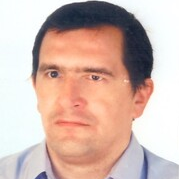Perovskites – New and Old Materials
A special issue of Crystals (ISSN 2073-4352). This special issue belongs to the section "Materials for Energy Applications".
Deadline for manuscript submissions: closed (30 November 2023) | Viewed by 10355
Special Issue Editors
Interests: solid state physics; EPR (electron paramagnetic resonance); magnetic properties of solids and magnetic measurements (SQUID); optical; infrared and XRD spectroscopy; crystallography
Special Issues, Collections and Topics in MDPI journals
Interests: laser diodes; scintillators; solid and nanoparticles materials characterization; EPR investigations, magnetic properties
Special Issues, Collections and Topics in MDPI journals
Special Issue Information
Dear Colleagues,
Perovskites are one of the best-known compounds. Research on them has been going on for almost two hundred years. Lew Perovski (1792 - 1852) is a Russian mineralogist whose study of the crystal structure of calcium titanium oxide (CaTiO3) gave the name to the class of compounds with the same crystal structure (ABX3), known as the perovskite structure. We are currently seeing a great resurgence in the study of perovskites, both for cognitive and application reasons. LiNbO3 is frequently investigated owing to its good electrooptic and acousto-optic properties. Similarly, the same as LiNbO3, LiTaO3 can also be widely used as a surface acoustic wave substrate, electro-optic modulator and second harmonic generation material. The power of perovskites lies in their structure. Conventional oxide perovskites are cubic. Hexagonal oxide perovskites, e.g., SrIrO3, are especially relevant due to their significance as quantum materials.
A new and great example of the significant applications of perovskites is their ability to convert solar energy into electricity. Perovskite solar sells could be the future of this kind energy. They are cheap cost, highly efficient, thin, lightweight and flexible since they can be printed by inks, and an interesting alternative to traditional silicon solar panels. They can be used as a thin film laid on glass or plastic. Perovskite solar cells convert sunlight into electricity around 50 % more efficiently than silicon cells. Ink jet printing and roll-to-roll methods can be used to produce the solar cells. Perovskites have reached about 30 % efficiency in lab tests. A perovskite–silicon combination might even achieve a 45 % efficiency, more than double that of today’s silicon panels.
The subject of this Special Issue is perovskites, presenting results from the latest research on their structural, physical, optical, magnetic, and other properties, as well as computer simulation and theoretical studies. It also covers perovskites as crystals, powders, and thin films, pure and doped. The properties of perovskites are the key to their future applications.
Prof. Dr. Tomasz Bodziony
Prof. Dr. SŁawomir Kaczmarek
Guest Editors
Manuscript Submission Information
Manuscripts should be submitted online at www.mdpi.com by registering and logging in to this website. Once you are registered, click here to go to the submission form. Manuscripts can be submitted until the deadline. All submissions that pass pre-check are peer-reviewed. Accepted papers will be published continuously in the journal (as soon as accepted) and will be listed together on the special issue website. Research articles, review articles as well as short communications are invited. For planned papers, a title and short abstract (about 100 words) can be sent to the Editorial Office for announcement on this website.
Submitted manuscripts should not have been published previously, nor be under consideration for publication elsewhere (except conference proceedings papers). All manuscripts are thoroughly refereed through a single-blind peer-review process. A guide for authors and other relevant information for submission of manuscripts is available on the Instructions for Authors page. Crystals is an international peer-reviewed open access monthly journal published by MDPI.
Please visit the Instructions for Authors page before submitting a manuscript. The Article Processing Charge (APC) for publication in this open access journal is 2100 CHF (Swiss Francs). Submitted papers should be well formatted and use good English. Authors may use MDPI's English editing service prior to publication or during author revisions.
Keywords
- perovskites
- nanomaterials
- optical materials
- quantum materials
- lasers
- waveguides
- electro-optic modulators
- solar cells
- energy converters.
Benefits of Publishing in a Special Issue
- Ease of navigation: Grouping papers by topic helps scholars navigate broad scope journals more efficiently.
- Greater discoverability: Special Issues support the reach and impact of scientific research. Articles in Special Issues are more discoverable and cited more frequently.
- Expansion of research network: Special Issues facilitate connections among authors, fostering scientific collaborations.
- External promotion: Articles in Special Issues are often promoted through the journal's social media, increasing their visibility.
- e-Book format: Special Issues with more than 10 articles can be published as dedicated e-books, ensuring wide and rapid dissemination.
Further information on MDPI's Special Issue policies can be found here.






